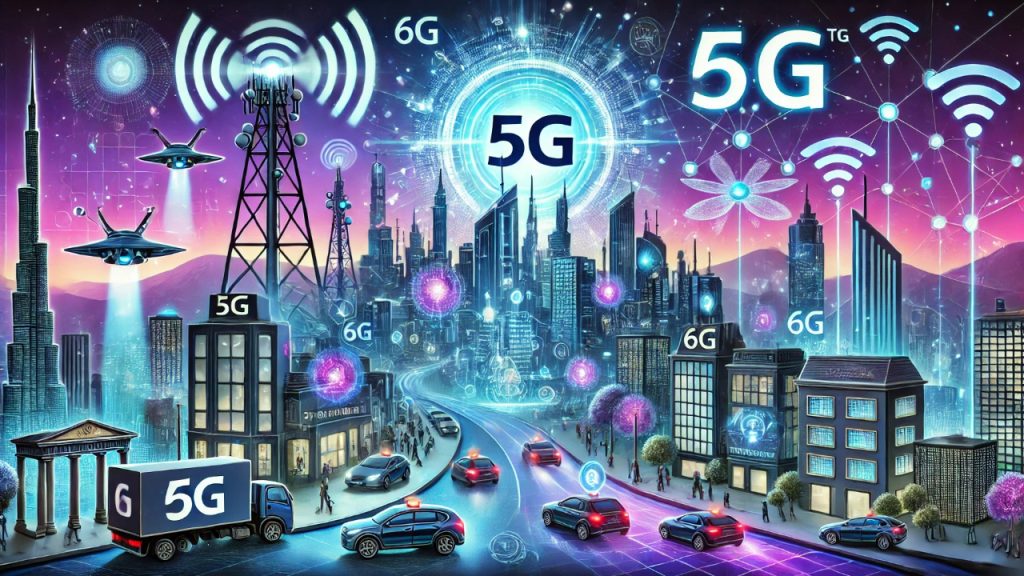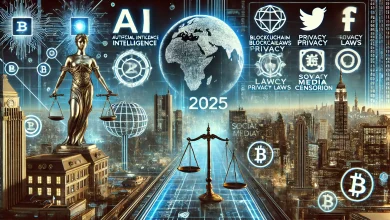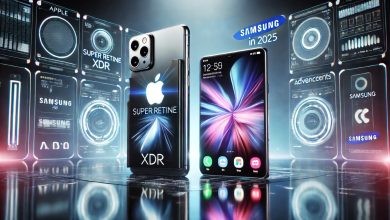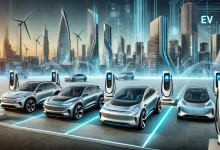5G vs. 6G: The Next Big Leap in Mobile Connectivity
5G vs. 6G: The Next Big Leap in Mobile Connectivity
Mobile communication technology has undergone substantial transformation throughout recent decades. Wireless technology has delivered transformative changes during every generation beginning with 1G’s voice calls and advancing to 5G’s ultra-fast internet. 6G technology emerges on the near horizon with the potential to deliver higher advancements. What sets 6G apart from 5G and what potential advancements will it introduce? This article examines the primary distinctions between 5G and 6G systems and examines their effects and the direction of future mobile network connectivity.
What is 5G?
The fifth-generation wireless technology known as 5G delivers substantially improved speed and connectivity performance while reducing latency compared to 4G. This innovation functions as a transformative force for application development.e autonomous driving, smart cities, IoT (Internet of Things), and cloud gaming.
Key Features of 5G:
- High Speed – Speeds can reach up to 10 Gbps, making downloads and streaming much faster.
- Ultra-Low Latency – Latency is reduced to 1 millisecond, enabling real-time communication.
- Mass Connectivity – 5G can support over a million devices per square kilometer.
- Better Spectrum Efficiency – Uses mmWave (millimeter wave) and sub-6 GHz frequencies for optimized performance.
Since its rollout, 5G has transformed various industries, including healthcare, automation, and entertainment. However, as technology continues to evolve, researchers are now preparing for the next major upgrade: 6G.
What is 6G?
6G, or the sixth-generation wireless technology, is expected to launch around 2030. While 5G is still expanding globally, 6G aims to push the boundaries of mobile connectivity even further. With terabit-per-second speeds, near-instant latency, AI-driven optimization, and enhanced sustainability, 6G will revolutionize how we interact with technology.
Expected Features of 6G:
- Ultra-Fast Speeds – Up to 1 Tbps (terabit per second), making it 100 times faster than 5G.
- Near-Zero Latency – Estimated latency as low as 0.1 milliseconds, improving real-time applications.
- AI-Driven Networks – 6G will integrate artificial intelligence for self-optimizing networks.
- Holographic Communication – Support for real-time 3D holograms and immersive AR/VR experiences.
- Terahertz (THz) Spectrum – Uses frequencies beyond 100 GHz, enabling faster data transmission.
- Sustainable Connectivity – Designed to be more energy-efficient and eco-friendly than previous networks.
With these features, 6G will not just improve internet speeds but also introduce new ways of communication, automation, and digital interaction.
5G vs. 6G: A Detailed Comparison
| Feature | 5G | 6G |
|---|---|---|
| Speed | Up to 10 Gbps | Up to 1 Tbps |
| Latency | ~1 millisecond | 0.1 milliseconds |
| Frequency Bands | mmWave (24-100 GHz) | Terahertz (THz) spectrum |
| AI Integration | Limited AI | Fully AI-driven networks |
| Connectivity | Supports millions of devices | Supports trillions of devices |
| Applications | IoT, Smart cities, AR/VR | Holographic communication, AI-powered automation |
These advancements will make 6G exponentially faster, smarter, and more efficient than 5G.
How Will 6G Impact Our Daily Lives?
6G is expected to redefine multiple industries and everyday interactions in ways that seem futuristic today. Some possible applications include:
1. Ultra-Realistic Virtual & Augmented Reality
6G will be fully absorbing digital worlds, which makes AR/VR messages trouble-free and hyper-practical. From holographic calls to digital tourism, 6G will revolutionize virtual interaction.
2. AI-Driven Smart Cities
With instant communication and self-optimizing networks, cities will become smarter and more efficient. Real-time traffic management, energy-efficient buildings, and automated urban planning will become a reality.
3. Advanced Healthcare & Remote Surgeries
6G will enable real-time remote surgeries with ultra-low latency, allowing doctors to operate on patients from thousands of miles away using robotic assistance.
4. Fully Autonomous Vehicles
Self-driving cars will communicate instantly with each other and their environment, making roads safer and reducing traffic congestion.
5. AI-Powered Automation
From industrial robots to smart home devices, AI-powered automation will become an integral part of daily life, reducing human effort and improving efficiency.
Challenges in 6G Development
Despite its incredible potential, 6G faces several challenges:
- Infrastructure Overhaul – Upgrading from 5G to 6G will require massive investments in network infrastructure.
- High Development Costs – Research and deployment of 6G will be cost-intensive.
- Security & Privacy Concerns – With increased connectivity, cybersecurity threats may also rise.
- Global Standardization – Establishing universal 6G standards will be a complex process.
However, researchers and tech giants like Samsung, Huawei, and Nokia are already investing in 6G research, ensuring that these challenges are addressed.
When Will 6G Arrive?
While 5G is still expanding, 6G is expected to launch around 2030. Early research and trials have already begun, and companies like Apple, Google, and Qualcomm are working on 6G-enabled devices.
The transition from 5G to 6G will be gradual, but once implemented, it will reshape industries, communication, and the digital experience forever.
Conclusion
The journey from 5G to 6G represents the next big leap in mobile connectivity. While 5G is already transforming the way we communicate and interact with technology, 6G will take these innovations even further. With ultra-fast speeds, near-zero latency, AI-driven automation, and advanced applications, 6G will revolutionize industries and create new possibilities beyond imagination.
As we move closer to 2030, the world will witness a new era of connectivity, where holographic communication, self-driving AI, and hyper-realistic virtual worlds become an everyday reality. The future of mobile networks is bright, and 6G is set to redefine digital transformation in ways we have yet to fully comprehend.







